What is a Roof Vent?
A roof vent, which is brief for roof ventilation, is a system that allows for enough airflow in the attic. These are an essential part of the roofing system. Its major purpose is to prevent the roof from overheating in the summer and moisture buildup in the winter. Regarding health concerns and structural damage, improper roof vent installation can be very costly. Ice dams, mold, and an astronomically high power bill are some of the repercussions of improper roof vent installation.
How Does Roof Ventilation Work?
Proper attic roof ventilation is necessary to avoid condensation in your attic due to overheating. An attic or roof space needs to be aired, and the two most popular methods are:
Natural Roof Exhaust Vents:
Natural roof ventilation is utilized in a wide range of locations where it is appropriate. The stack effect and the wind effect naturally spread the air.
Mechanical Roof Exhaust Vents:
A power source is necessary to generate airflow. The stack effect occurs as heated air rises and creates more pressure, causing attic pressure to rise. The hot air that departs is referred to as exhaust. Regardless, the heated air will not be able to escape unless cooler, lower-pressure air can enter.
Different Types of Roof Vents:
There are two types of roof vents: exhaust vents and intake vents, and when it comes to how they work, there’s only one rule to remember: exhaust vents let stale air out, while intake vents let new air.
A. Exhaust Vents:
1. Hip Vents:
A hip vent is similar to a ridge vent in appearance. This sort of roof is usually in the shape of a pyramid. The roofs are steep and strongly sloping, with no ridges on which to employ a ridge vent. Furthermore, because the vent is discreet and low-profile, you won’t have to worry about having ten box vents slatted into your roof to accommodate your area. Hip vents, like ridge vents, should be used with soffit ventilation for maximum efficiency.
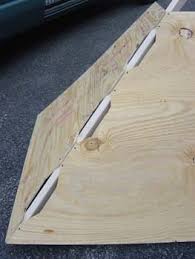
Fig 1: Hip Vents
Courtesy: dciproducts.com
2. Ridge Vents:
Ridge vents are the latest roof ventilation concept, and they’ve quickly become the most preferred exhaust roof ventilation choice for modern roofing designs. It is most likely the type of vent system you’ll get if you’re rebuilding your roof. These vents are designed to be put at the peak of a roof slope and are invisible. Ridge vents are a little more expensive, but instead of venting only certain regions instead of venting.
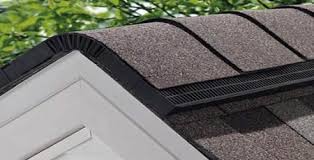
Fig 2: Ridge Vents
Courtesy: wisdomroofing.com
As a result, they are one of the most efficient roof ventilation alternatives when correctly placed, which can offset the high initial cost. Ridge vents and soffit intake venting are frequently combined to attain optimum results.
3. Off-ridge Vents
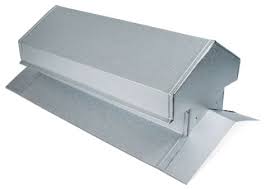
Fig 3: Off-ridge Vents
Courtesy: tamcometalroof.com
Off-ridge vents are a type of vent that is less well-known. They aren’t as well-known as other types of vents, and finding information on them might be difficult. They work similarly to box vents, which we’ll talk about next. Off-ridge vents necessitate a roof cutout. Then they’re installed in the cutout, which is usually towards the crest. These have a long and thin form to them. These vents remove moisture and heated air from your attic or roof space.
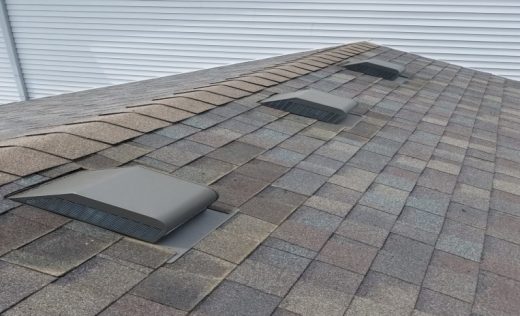 4. Box Vents:
4. Box Vents:
Fig 4: Box Vents
Courtesy: homedepot.com
Box vents are low-profile extensions put over holes cut into the roof and are designed to operate with open attics. Box vents are rarely installed as single units; the number added to a roof is governed by the attic’s square footage and is “powered” by natural winds and convection (circular motion induced by the exchange of warm air that varies temperatures). Roofers dislike these vents because they require many holes in the roof, making the work more time-consuming and costly.
Furthermore, every cut in the roof necessitates the trimming of shingles. On the other hand, Squirrels prefer box vents because they’re easier to chew through, so covering these basic sorts with screens is recommended.
5. Wind Turbines/Whirlybird Ventilation:
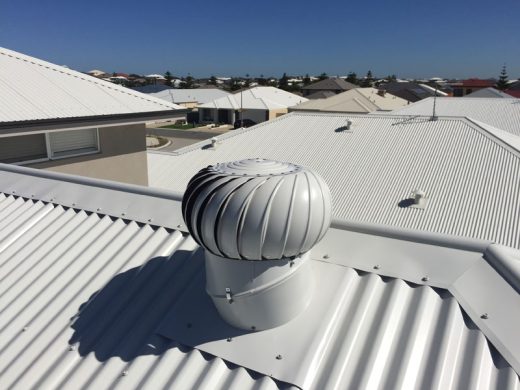
Fig 5: Wind Turbines/Whirlybird Ventilation
Courtesy: constrofacilator.com
Wind turbine roof vents, often known as whirlybirds, have been around for years. They’re most likely to be found in older homes or apartment buildings. These roof vents only work because they move air, not because they are powered by energy. The wind turbine takes hot, humid, stale air out of your attic area and cools it naturally using natural convection as it spins.
Wind turbines are the ideal option if you reside in a region with a lot of wind. Although the vent works well at speeds up to 5 mph, it is not required. These vents are outstanding in terms of both price and lifespan.
6. Power Vents:
This type of roof vent is powered by electricity. Electric-powered attic vents are a common name for them. These motorized vents can be installed on the roof or the gable of your home. You can pick from various hues to find one that matches your other colors. Furthermore, the majority of the roof power vents are low-profile. They’re spherical and little, and they’re near to your roof. Hardwired and solar-powered vents are the two most common varieties.
i) Hardwired Power Roof Vents:
It is best to consult a roofing expert to ensure that the roof meets the home’s needs. Before installing roof vents, a variety of variables must be considered. Cost, energy efficiency, climatic conditions, and aesthetics are just a few considerations. Because each roof vent takes a somewhat
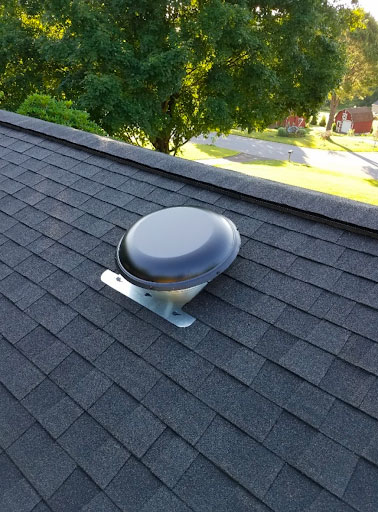
Fig 6: Hardwired Power Roof Vents
Courtesy: upgradehome.com
different approach to dealing with heat and moisture issues, it’s important to read the instructions before deciding.
ii) Solar-Powered Roof Vents
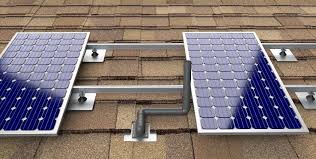
Fig 7: Solar Power Roof Vents
Courtesy: roofingmagazine.com
Solar-powered vents are comparable to power vents. However, they are powered by the sun instead of electricity. Those vents look like wonderful energy savers, but while the solar-powered battery is charging, they are turned off. The solar panel will not be able to keep a charge long enough to run the vent all day due to the power necessary to drive the motor. As a result, your air conditioner may run more frequently while the battery is recharging, increasing your energy use.
7. Cupola Vents:

Fig 8: Cupola Vents
Courtesy: bandbuilders.com
The cupola vent is also a terrific way to add a little something extra to your roof. These vents are quite enormous, but they’re also quite attractive. Sheds, barns, and outbuildings are more likely to have a cupola vent than most dwellings. It is, nonetheless, a good vent that is still in use today. The original function of the cupola vent was to enable ventilation and light into an attic or roof space from a single source. These roof vents are mounted directly on the ridge of a roof and allow air to flow freely through them.
B. Intake Vent:
8. Soffit Vents:
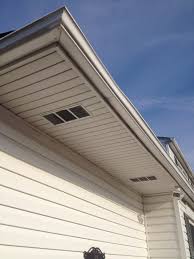
Fig 9: Soffit Vents
Courtesy: instructables.com
Soffit vents are one-of-a-kind vents with their distinct style. These vents are usually put into the underside of an eave rather than immediately on the roof. They could potentially be at the top of their game. Soffit is a thin, flexible material that slides into place and allows airflow. It allows warm, humid air to escape the room before causing difficulties. The soffit vent is effective, but it is frequently used in conjunction with other vents, such as the ones listed above.
9. Drip-Edge Vents:
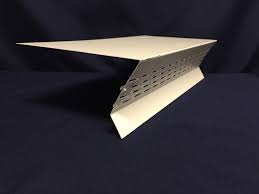
Fig 10: Drip-Edge Vents
Courtesy: davessheetmetalinc.com
Because not all homes have a place where the soffit vent may be installed, drip-edge vents were invented to make installation easier. They have a netted design and are positioned on the roof’s drip-edge to ensure cool airflow. It’s the best intake vent for tight spaces that need a drip-edge but don’t have much space. It is more effective when used with an exhaust vent, and its main disadvantage is that it is more difficult to install than the others.
10. Over Fascia Vents:
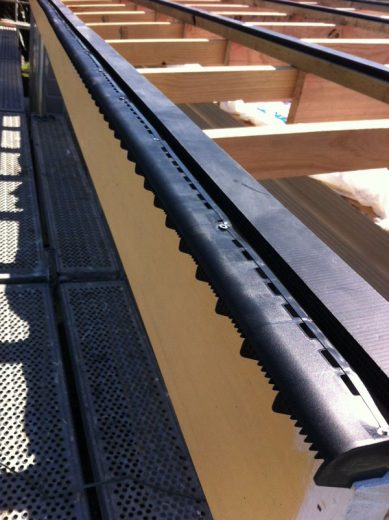
Fig 11: Over Fascia Vents
Courtesy: constrafacilator.com
The fascia vent is an excellent choice for hip roofs. Because the hip roof is pyramidal in shape. There isn’t much of an edge, and there aren’t any eaves to attach drip-edge or soffit venting. Fascia vents are an excellent choice in this situation. These vents work well in conjunction with hip vents to provide the optimal ventilation for a roof like this.
The principle is similar to drip-edge or soffit vent systems, except for the setup. We recommend using the hip vent with the fascia vent for hip-style roofs. Houses with this sort of roof frequently contain a lot of attic or roof space, so keeping the heat in check might save you a lot of money on cooling.
Advantages of Roof Ventilation:
- Intake vents bring cool air into the roof/attic, and exhaust vents eliminate the more humid and warmer air. As a result, it reduces summer overheating and winter.
- Overheating in the attic is a severe problem. As a result, the shingles and other underlayment become dry and eventually crack. Aside from that, consider the cost of a decreased roof inside in the long term.ice dams
- Without the fresh air, it provides, especially during the hottest seasons, your air conditioner and fans would have to work twice as hard, resulting in a higher electric bill.
- Roof vents also help to keep moisture at a distance. Molds are likely to appear when the roof becomes excessively wet, combined with the hot, humid air that rises. The absence of an exhaust vent to assist in the melting of ice dams can significantly influence the home’s structural integrity.
Conclusion:
Roof vents are more important than they appear. They play an important role in maintaining adequate air circulation in the home, allowing excess fumes to escape and keeping the area cooler, especially during hot summers, and circulating warmer, more humid air during the winter.
Because there are various types of roof vents, you must decide which to purchase. .It’s worth noting that some roof vent combinations work better together. At the very least, you should think about things like cost, efficiency, durability, and performance. Having a roof vent is always a good idea when all is said and done, provided you know which ones are appropriate for your property.
References:
1. What Are The Different Types Of Roof Vents For Your House? (+ Images). (n.d.). Epic Home Ideas; www.epichomeideas.com. Retrieved April 28, 2022, from https://www.epichomeideas.com/roof-vents-types/
2. Types of Roof Exhaust Vents. (2022, February 6). 9To5Civil; 9to5civil.com. https://9to5civil.com/types-of-roof-exhaust-vents/
3. Mahajan, B. (2022, March 31). What Is Roof Vent | 9 Types Of Roof Vents | Best Roof Vents | Roof Vents For Houses. Civiconcepts; civiconcepts.com. https://civiconcepts.com/blog/roof-vent-types
4. Roofing ventilation and different types of vents – Constro Facilitator. (2020, August 20). Constro Facilitator; www.constrofacilitator.com. https://www.constrofacilitator.com/roofing-ventilation-and-different-types-of-vents/
5. Gundaraniya, N. (2022, April 21). What Is a Roof Vent | Different Types of Roof Vents | How to Accomplish Air Roof Vents. CivilJungle; civiljungle.com. https://civiljungle.com/roof-vent/
6. 11 Best Types Of Roof Vents + Understanding Attic Ventilation – Roof Hub. (2020, May 8). Roof Hub; myroofhub.com. https://myroofhub.com/materials/roof-vents-attic-ventilation/
7. 13+ Different Types Of Roof Vents With Pictures (Pros and Cons). (2021, June 16). FarmFoodFamily; farmfoodfamily.com. https://farmfoodfamily.com/types-of-roof-vents/
If you have a query, you can ask a question here.


